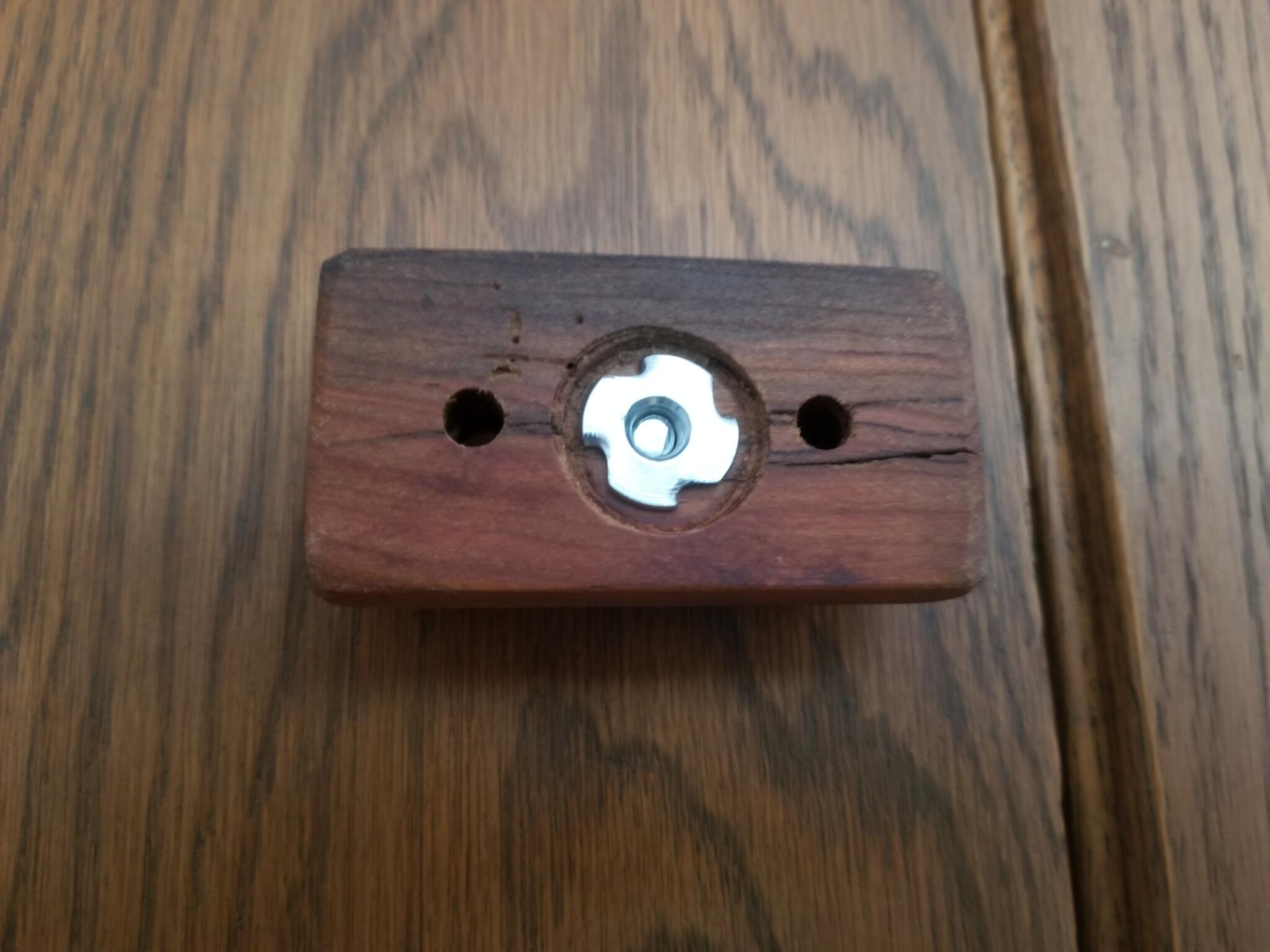Rationale:
- We didn't want to go out and buy and install new doorknobs.
- We wanted something easily operable by an adult on either side of the door.
- Some of the doors in this house are kinda broken and/or don't shut all the way anyway.
Solution: These wooden door latch things:


I've installed these on three different doors, now, and while the design changes a bit each time, I like to think it's approaching perfection. The basic idea is that an 'external latch' catches the door frame, preventing the door from opening unless it is turned vertical. An 'interior handle' provides a way to turn it from the inside. It's all held together by a single 1/4″-20 bolt or threaded rod.
Details:
- 1/4″ hole 17+1/4″ from the top of the door, 2+1/4″ from the edge.
- Exterior latch: 4+1/2″ rounded-on-both-ends gridrail with 1/4″ center hole, counterbored on each side.
- Frame extension: Not needed for the instance shown above, but to give the latch more surface to grab onto, a 4+1/2″ × 1+3/8″ × 3/4″ chunk of wood was bolted onto another door frame, and this significantly reduced the amount by which the bolt assembly would bend away from the door frame under load.
- Spacer: 3″-long × 1+3/8″-thick × 1+1/2″-tall chunk of wood. Bolt hole is at least 1/4″, probably 5/16″, counterbored in the front to accommodate some hex nuts and maybe a washer. This is screwed to the door with the second hole, and provides a bit of rigidity, helping to hold the bolt from bending away from the door frame when the baby tries to force her way through. Ideally it would also provide support to the hingeward end of the latch, but this one wasn't thick enough.
- A 6″ 1/4″-20 carriage bolt. The square bit under the head digs into the wood and helps keep the latch from spinning.
- A T-nut on the front of the handle.
- Hex nuts on the backs of the latch and handle, tight-tight-tight and possibly doubled-up. The latch and handle must not turn relative to the bolt, even under a bit of force.